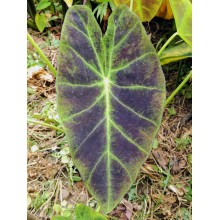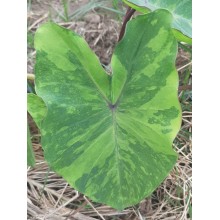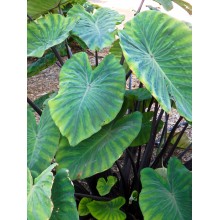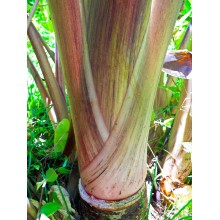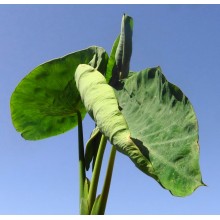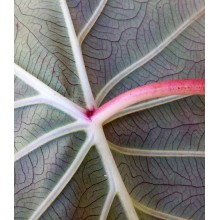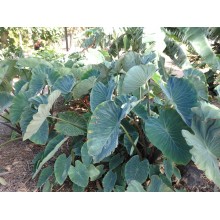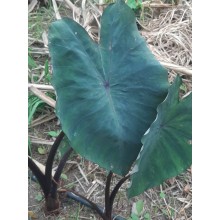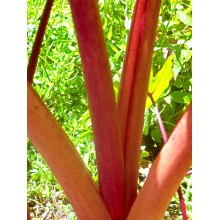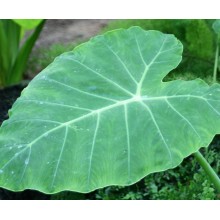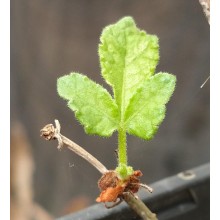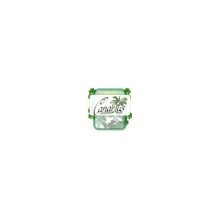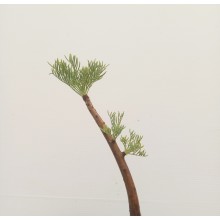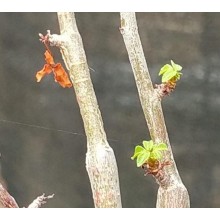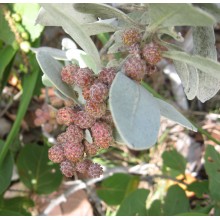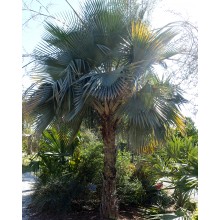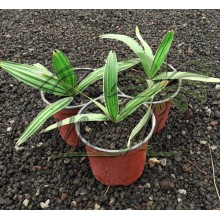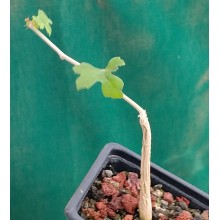Tutte le piante Ci sono 1884 prodotti.

Se vi piacciono le piante esotiche, allora sei nel posto giusto. Canarius offre le piante esotiche difficile da trovare che sono raramente disponibili in centri di giardinaggio. Il nostro negozio ha specie naturali e rari ibridi. Offriamo piante esotiche provenienti dalle Isole Canarie.
Gli ordini sono inviati a ovunque in Europa e anche in tutto il mondo. I pacchi raggiungeranno la vostra casa in pochi giorni dopo la spedizione (ma abbiamo bisogno anche alcuni giorni per l'elaborazione). Non esitate a contattarci se avete domande.
Sotto-categorie
-
Succulente
I deserti del mondo e le zone secche ospitano le piante più interessanti. Canarius offre una selezione crescente di piante succulente di massima qualità, perché sono coltivate all'aperto, in pieno sole delle Isole Canarie.
I succulente o "piante grasse" sono specie di ritenzione di acqua, adattate alle condizioni di asciutto. Loro accumulano succum (succo, acqua) nelle loro foglie, steli o radici, e spesso mostrano un aspetto robusto e carnoso.
-
Esotiche
Le piante esotiche sono specie provenienti da altre parti del mondo, e di solito hanno le qualità ornamentali: una vegetazione lussureggiante, fiori colorati, forme insolite... Qui è possibile trovare una grande varietà di piante esotiche: da bromeliacee e Heliconias, fino a palme e piante d'appartamento.
Le piante esotiche non hanno un uso particolare. I collettori acquistano questo tipo di piante per la loro rarità, per la decorazione interna o esterna, a seconda delle loro caratteristiche.
-
Da frutto & Per la salute
Le piante da frutto, erbe e piante medicinale sono concentrati su come ottenere una salute migliore. In questo contenuto della sezione, ogni tipo di pianta produce effetti salutari, entrambi alberi da frutto (Feijoa, Ananas, Fina Jete...) e piante per la salute, come Graviola, Aloe vera, Callisia fragrans... Nel normale metabolismo di tutti gli esseri viventi, l'organismo produce delle sostanze nutritive da latenti per l'ambiente; alcune di queste sostanze chimiche sono parte del processo in tutte le specie. Normalmente, i composti utili sono concentrati in alcune dei sue parti: foglie, semi, fiori...
-
Speciale
Su canarius.com cerchiamo di rimuovere i limiti nel campo della botanica. Sul nostro negozio online cerchiamo di facilitare l'acquisto / vendita di piante di tutto il mondo. Per questo motivo, coltiviamo piante di tutto il mondo, specie più comuni ed anche piante più particolari, come si può vedere in questa sezione.
-
Colocasia esculenta 'Illustris'
Colocasia esculenta 'Illustris'
Colocasia 'Illustris' is an old classic of tropical gardening. It produces very elegant narrow leaves with dark purple markings and thick veins. Its origin is unknown, but it was first described in 1873 as Alocasia illustris by the renown nurseryman William Bull, in England. A longer, more complete name would be Colocasia esculenta var. antiquorum...
22,00 € -
Colocasia esculenta 'Lime Aide'
Colocasia esculenta 'Lime Aide'
This cultivar of taro is highly ornamental because of an elegant pattern of greens shown on leaves.
34,40 € -
Colocasia esculenta 'Mana Ele Ele'
Colocasia esculenta 'Mana Ele Ele'
This Polynesian crop is also an incredible ornamental, with bold thick leaves and truly black leafstalks.
44,50 € -
Colocasia esculenta 'Manini 'Owali'
Colocasia esculenta 'Manini 'Owali'
Hawaiian taros are both traditional food and showy ornamentals. 'Manini Owali' has leaf stalks streaked in black and different colours. Leaves are green. Crop cycle is fastleaf stalks
32,30 € -
Colocasia esculenta 'Ñame Blanco' - Taro, Ñame
Colocasia esculenta 'Ñame Blanco' - Taro, Ñame
Taro is the edible corm of a spectacular plant that can be grown in damp soil or in the water. It has huge exotic foliage. This variety named Ñame Blanco is traditionally grown in the Canary Islands.
27,40 € -
Colocasia esculenta 'Pii Alii'
Colocasia esculenta 'Pii Alii'
This taro shows an unusual leaf shape, as the sides of each blade are curled upwards. It is quite productive; its corms have a reddish skin and harvest time is 8-12 months.
32,00 € -
Colocasia esculenta 'Pink China'
Colocasia esculenta 'Pink China'
This is said to be the cold-hardiest or one of the most resistant of all edible taros. It is also ornamental, with pinkcolour in the leaf petioles and main veins.
20,30 € -
Colocasia esculenta 'Pololu'
Colocasia esculenta 'Pololu'
Leaves are green, leaf stalks are matte, often tinged with a pinkish.brownish hue. It is used in polynesian cuisine to prepare a "fairly good poi".
35,50 € -
Colocasia esculenta 'Ula'ula Kumu'
Colocasia esculenta 'Ula'ula Kumu'
This is one of the most beautiful taros! Bright pink leaf stalks hold green leaves. Corms are used in traditional polynesian cuisine both for Poi and for Table use, steamed, baked, fried or boiled.
32,30 € -
Colocasia gigantea
Colocasia gigantea
Colocasia gigantea, also called giant elephant ear or Indian taro, is a 1.5–3 m tall herb with a large, fibrous, inedible corm, producing at its apex a whorl of large leaves.
32,00 € -
Commiphora boranensis
Commiphora boranensis
Fairly uncommon in cultivation, this mhyrr shrub to 6 m tall has pinnate leaves, often with 3 or 5 segments and dark, peeling bark with copper tones. Commiphora boranensis is native to in the desert or dry shrubland in Eastern Africa.
48,30 € -
Commiphora holtziana Sagalla
Commiphora holtziana Sagalla
This mhyrr grows as a shrub to small tree. Its flaking bark has an uncommon grey-blue colour, while its young branches are dark brown.
48,70 € -
Commiphora kraeuseliana
Commiphora kraeuseliana
Very elegant, short-growing mhyrr from open rocky areas in Northern Namibia, Commiphora kraeuseliana is a small deciduous shrub, densely and regularly branched.
94,60 € -
Copernicia hospita
Copernicia hospita
Copernicia is a palm which is endemic to Cuba.The fan-shaped leaves are 1.5 to 2 m wide and are wedge-shaped circular. They are divided into many rigid segments. The ends of the segments are slightly hanging.
42,20 € -
Copernicia rigida 15-20 cm - Cont. 14 cm - 3 years
Copernicia rigida 15-20 cm - Cont. 14 cm - 3 years
10-15 cm - Cont. 12 cm - 2 years. Unusual palm with wedge-shaped upright leaves. Copernicia rigida is native to Cental-Eastern Cuba, in serpentine savanna or scrub.Trunk is gray, up to 15 m (50 ft) tall with a dense compact crown of stiff, erect, wedge-sh
36,70 € -
Corallocarpus sp.
Corallocarpus sp.
Adenium somalense is one of the most beautiful caudiciform plants. It grows wild in Somalia and through the Rift Valley into Ethiopia, Kenya, and Tanzania. Depending on the area, its trunk can take different shapes from a fat shrub to a small tree (more than 4 m), differently from the similar species A. obesum whose caudex is mainly underground. The showy...
28,40 €
Al momento ci sono pochi prodotti in questa categoria Tutte le piante




















